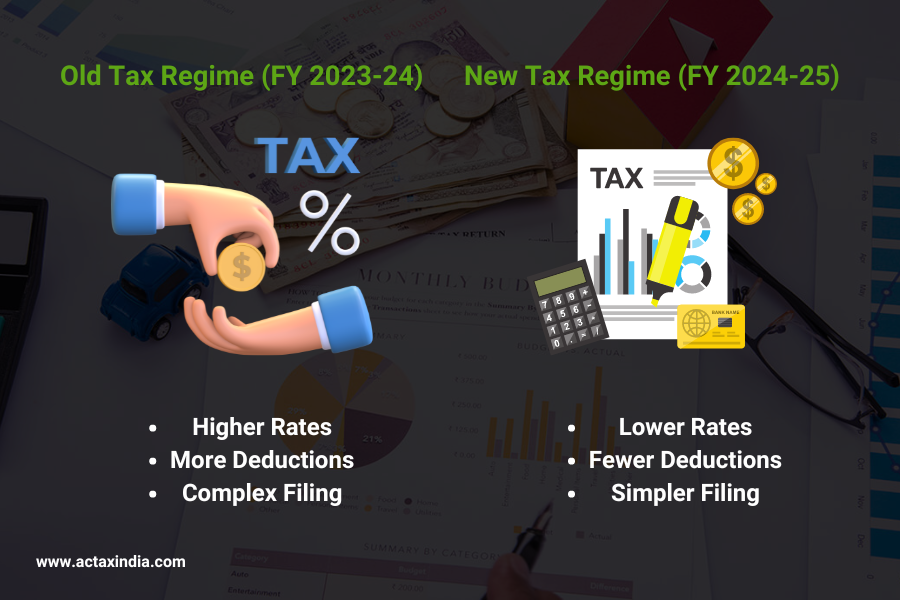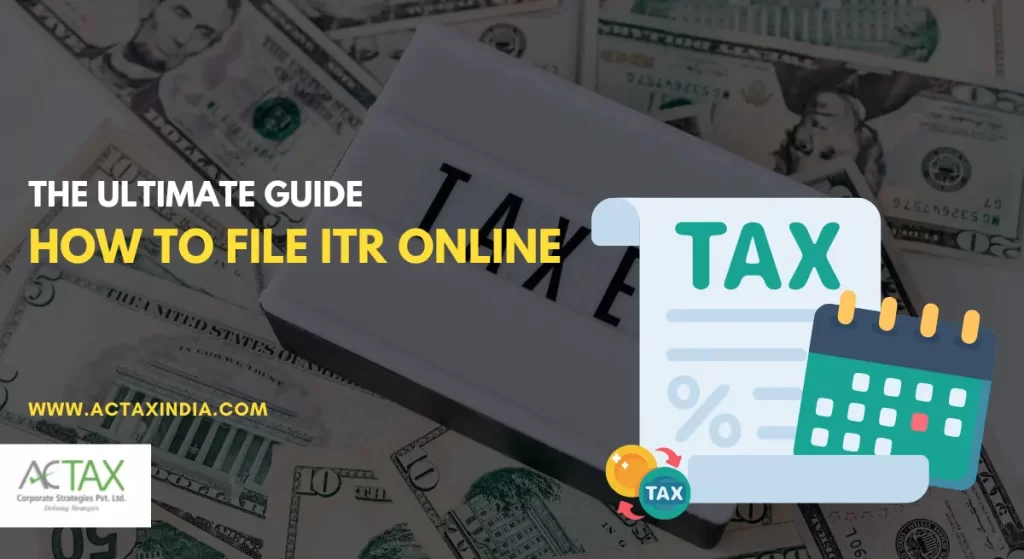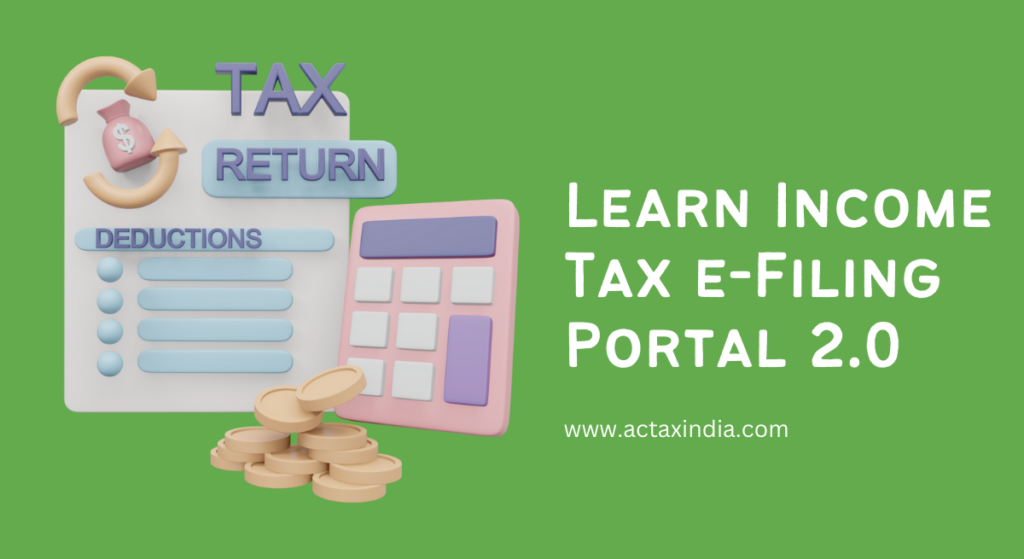Do you work as an employee, contractor, or run a business in India and find it difficult to cope with the changes in the new tax regime and brackets for tax? This blog post is your definitive guide to – covering every important thing about tax brackets in India for the financial year 2023-24 and later (assessment year 2024-25).
Table of Contents
Tax Brackets in India Explained: New vs. Old Tax Regime in India (2023-24 & 2024-25)

Old Tax Regime vs. New Tax Regime
India in its second budget introduced an entirely different tax arrangement with options against the old tax regime. Those tax systems show different tax hierarchies and structures. Here’s a breakdown:
- Old Tax Regime: The said system has numerous excuses including subsections 80C and 80D, which ultimately give you a chance to significantly reduce the taxable income. However, tax bands in the old regime are higher than the new one.
New Tax Regime: It necessitates a lower tax rate than the old regime. Nevertheless, the downside is that it recommends the bulk elimination of the majority of the deductions and exemptions.
Tax Slabs for Different Taxpayers (Senior Citizens)
Here’s a simple breakdown for the taxpayers and their respective tax slabs, coming from different age groups of senior citizenship:
- Senior Citizens (60+ years): Senior citizens can take a deduction when they file their income tax. The tax exemption slabs also vary differently for the junior employees as compared with their counterparts from the senior group of the same institution.
- Super Senior Citizens (80+ years): Those the age of 80 and above will be given greater tax preferences, with some even considered to be tax-free.
Additional Factors Affecting Your Tax Bill
Besides tax brackets, other factors can influence your tax liability:
- Deductions: One can get an advantage by way of deductions going under Section 80C for expenditure on PPF, ELSS mutual funds, etc., which reduce your tax forfeiture.
- Exemptions: Agricultural income is one of the few kinds of income that are free of any taxes.
- Surcharge: On top of the payment of such tax, a cutoff or ceiling for those earning above a particular amount is the new way of calculating income taxes.
- Cess: A small tax levied on top of income tax.
FAQs
Which tax regime is better? The new one or the old one?
The new tax regime benefits the people with low taxable income. It further facilitates minimal investments in tax-saving techniques. It puts forward lower tax rates, nonetheless eliminating most deductions. On the other hand, the old tax regime is more beneficial for the high-income earners. It can also be used advantageously by those taxpayers who have significant investments in tax-saving schemes (e.g., home loans, insurance, etc.). Irrespective of its high tax rates, it allows significant deductions. As a whole, it can be said that one should compare both regimes and then decide, based on their income structure, which one is helping them to save the most. Contact Actax India to get more clarity on this. . Refer to this blog ITR Filing Due Dates: A Complete Guide of Actax India
Can we use the old tax regime if we want?
Yes, the old tax regime can be used in India, but it is subject to certain limitations. After the due date, one must mandatorily file the tax under the new regime only.
What is the income tax rate for LLPs or partnership firms?
The LLPs and the partnership firms are supposed to pay 30% on their taxable income, with 12% surcharge in cases the income exceeds ₹1 crore, as per the latest regime, and 4% cess.
Tax Bracket Comparison (Old Tax Regime vs. New Tax Regime)
Here’s a brief table summarizing the tax brackets in India for the old and the new tax regimes for financial year 2023-24 & 2024-25:
Income Slab | Old Tax Regime (Age < 60 years & NRIs) | New Tax Regime |
Up to ₹2,50,000 | Nil | Nil |
₹2,50,001 – ₹5,00,000 | 5% | 5% |
₹5,00,001 – ₹6,00,000 | 10% | 10% |
₹6,00,001 – ₹7,50,000 | 10% | 15% |
₹7,50,001 – ₹9,00,000 | 15% | 15% |
₹9,00,001 – ₹10,00,000 | 15% | 20% |
₹10,00,001 – ₹12,00,000 | 20% | 20% |
₹12,00,001 – ₹12,50,000 | 20% | 20% |
₹12,50,001 – ₹15,00,000 | 30% | 25% |
Above ₹15,00,000 | 30% | 30% |
Note: This is based on the income range only of the taxpayers. This table excludes the tax slabs for NRIs and senior citizens. Cess and surcharge will be applied on the tax amount of both these tax regimes, for which certain variations may arise in the final calculations. For more comprehensive and accurate knowledge, contact Actax India and book a consultancy with Actax’s tax experts.
Based on the age group of the taxpayers, a brief list has been framed to showcase the tax brackets in India for the old and the new tax regimes for financial year 2023-24 & 2024-25:
Old Tax Regime for Individuals below 60 years and NRIs:
Income Slab | Tax Bracket in India |
Up to ₹2,50,000 | Nil |
₹2,50,001 to ₹5,00,000 | 5% |
₹5,00,001 to ₹10,00,000 | 20% |
Above ₹10,00,000 | 30% |
Old Tax Regime for Individuals aged 60 years to 80 years:
Income Slab | Tax Bracket in India |
Up to ₹3,00,000 | Nil |
₹3,00,001 to ₹5,00,000 | 5% |
₹5,00,001 to ₹10,00,000 | 20% |
Above ₹10,00,000 | 30% |
Old Tax Regime for Individuals aged more than 80 years:
Income Slab | Tax Bracket in India |
Up to ₹5,00,000 | Nil |
₹5,00,001 to ₹10,00,000 | 20% |
Above ₹10,00,000 | 30% |
All Inclusive New Tax Regime:
Income Slab | Tax Bracket in India |
Up to ₹2,50,000 | Nil |
₹2,50,001 to ₹5,00,000 | 5% |
₹5,00,001 to ₹7,50,000 | 10% |
₹7,50,001 to ₹10,00,000 | 15% |
₹10,00,001 to ₹12,50,000 | 20% |
₹12,50,001 to ₹15,00,000 | 25% |
Above ₹15,00,00 | 30% |
Note: Cess and surcharge will be applied on the tax amount of both these tax regimes, for which certain variations may arise in the final calculations. For more comprehensive and accurate knowledge, contact Actax India and book a consultancy with Actax’s tax experts.
Tax Brackets in India for Companies for Financial Year 2023-24 & 2024-25:
Income tax slabs are usually not applicable to Indian companies. The corporate entities are usually charged at a flat rate. The current tax rate of India for domestic companies is 30%, only subjected to certain exceptions. To know more, contact the experts of Actax India






